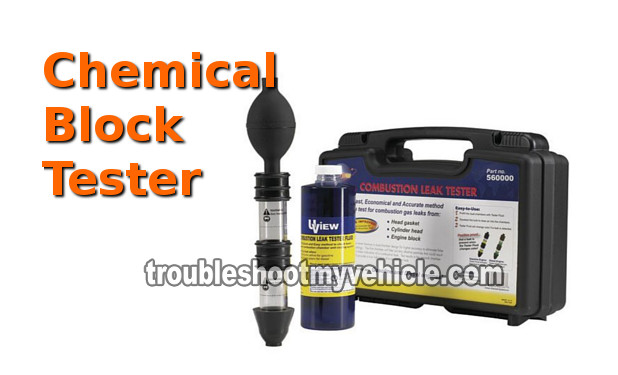TEST 2: Coolant Shooting Out Of Radiator

If your Ford Escape's engine oil passes TEST 1, the next test is to see if coolant will shoot out of the coolant reservoir/expansion tank (with the cap removed) when cranking the engine.
Before I continue, let me explain that this test is usually done by removing the radiator cap. But the Ford Escape's radiator does not come equipped with a radiator cap. So, this test has to be done on the coolant reservoir/expansion tank.
The idea behind this test is to see if the head gasket is letting compression pressures escape thru' the cooling system. If these pressures/gases are escaping into the cooling system, coolant will get forcefully pushed out of an open coolant reservoir/expansion tank as we crank the engine.
OK, these are the test steps:
- 1
Remove the cap from the coolant reservoir/expansion tank. If the coolant level is low, top it off before proceeding.
IMPORTANT: The engine should be completely cold before you open the coolant reservoir/expansion tank cap. Opening the coolant reservoir/expansion tank cap on a hot engine can spray hot coolant all over you and severely burn you. - 2
Stand at a safe distance from the engine but within view of the coolant reservoir/expansion tank.
- 3
When ready, have your helper crank the engine.
You'll see one of two results: The coolant shoots out violently when the engine was cranked -OR- the coolant was not disturbed at all.
Let's take a look at what your test results mean:
CASE 1: The coolant shot out of the coolant reservoir/expansion tank. This confirms beyond a shadow of a doubt that you do have a blown head gasket on your hands.
CASE 2: The coolant DID NOT shoot out of the coolant reservoir/expansion tank. So far so good. In TEST 1, you confirmed that coolant isn't mixing with the engine oil. In this test you have confirmed that no exhaust gases are escaping thru' the coolant reservoir/expansion tank.
Your next test is TEST 3
TEST 3: Using A Block Tester (Combustion Leak Tester)

If you've reached this point, you've already confirmed that the engine oil is not mixed with coolant and that coolant is not being shot out of the coolant expansion tank by combustion pressures. Our next test, is a block test done with a combustion leak detector.
This is the definitive test and one used by all major repair shops to diagnose a blown head gasket.
This is how this test works:
- A blue liquid chemical, which is blue in color, is placed in the tester (see photo above).
- The tester assembly is then placed on the open radiator neck (you may have to drain some of the coolant in the radiator since this tool needs to ‘gulp’ some of the air inside the radiator).
- The rubber bellow is then squeezed to suck in the air up through the two fluid-filled chambers. As the air bubbles up through the fluid, it will cause a chemical reaction.
- If the blue chemical turns yellow (for gasoline engines), combustion gases are entering the radiator. This result confirms a head gasket failure, a cracked block, or a cracked cylinder head issue.
- If the blue chemical doesn't change color, you can conclude that you don't have a head gasket failure, a cracked block, or a cracked cylinder head issue.
You can shop for a block tester here:




